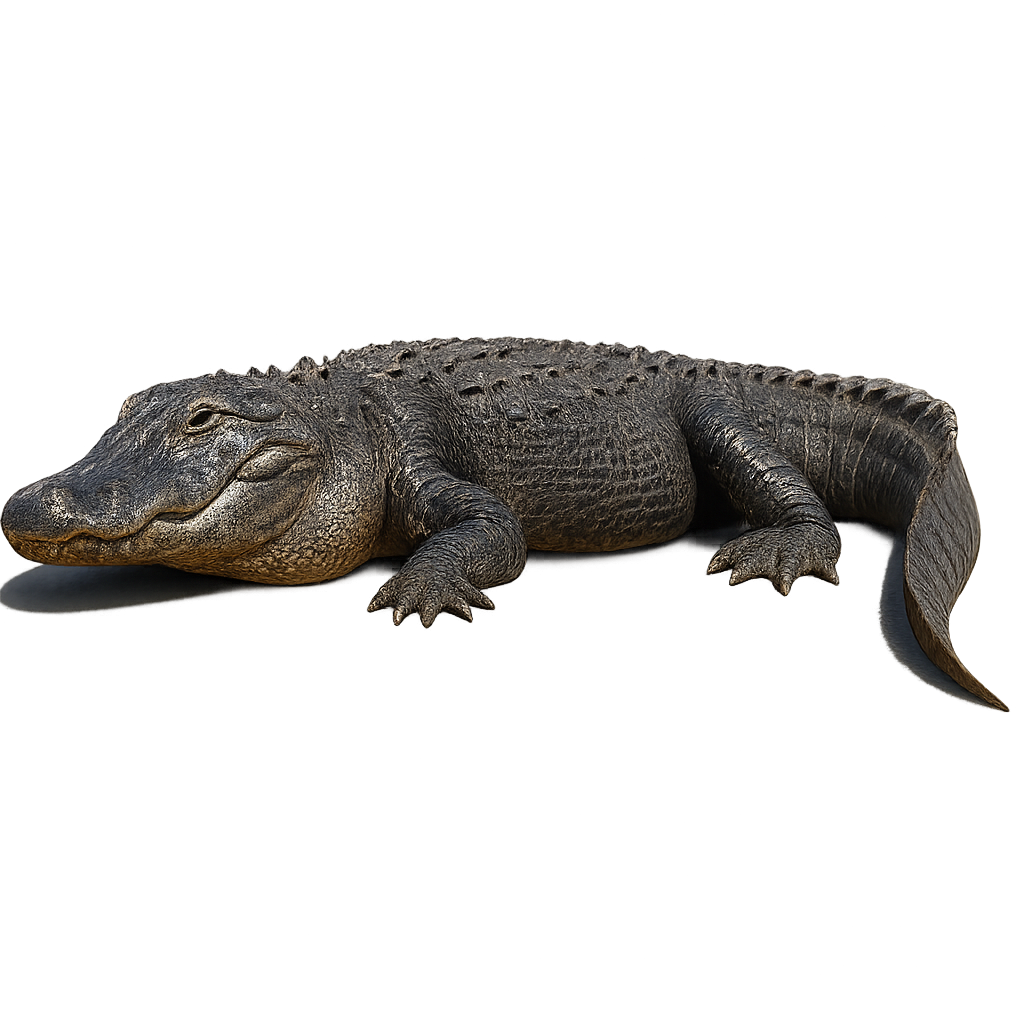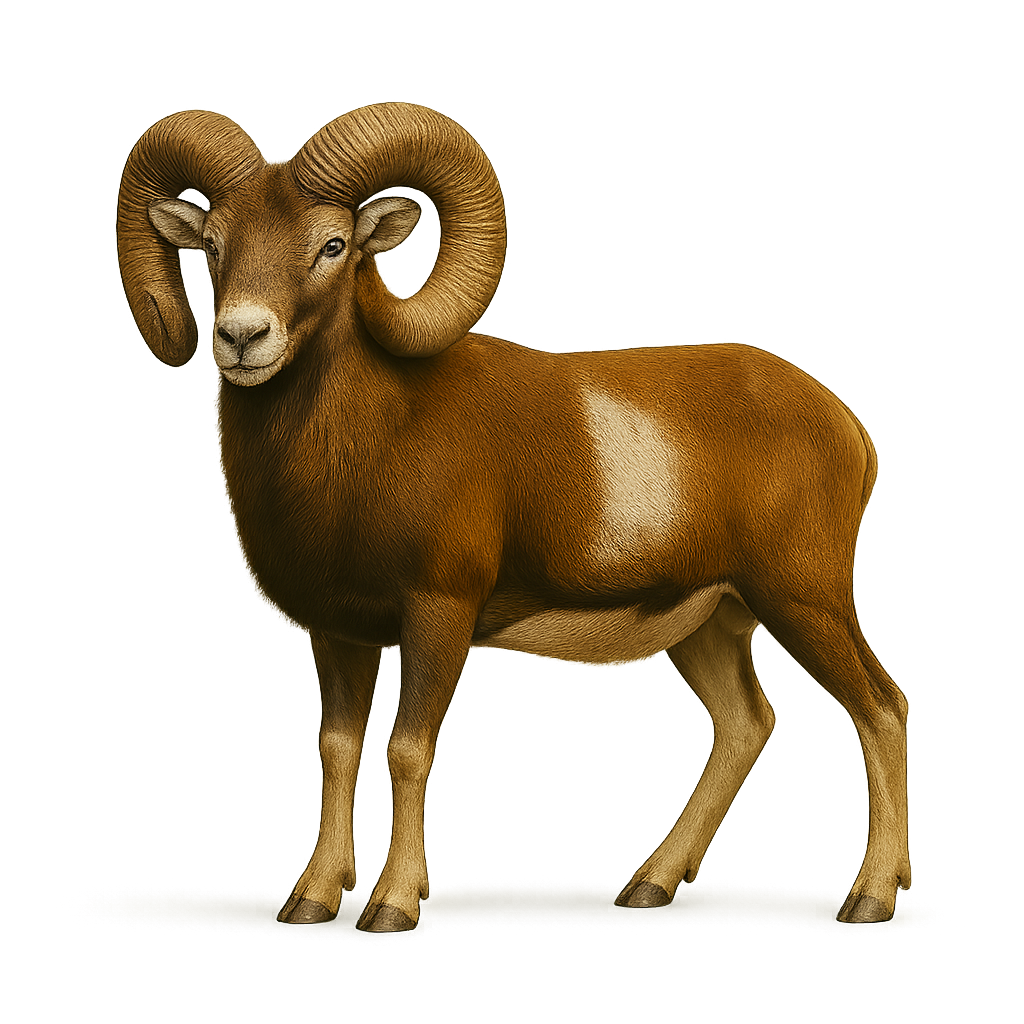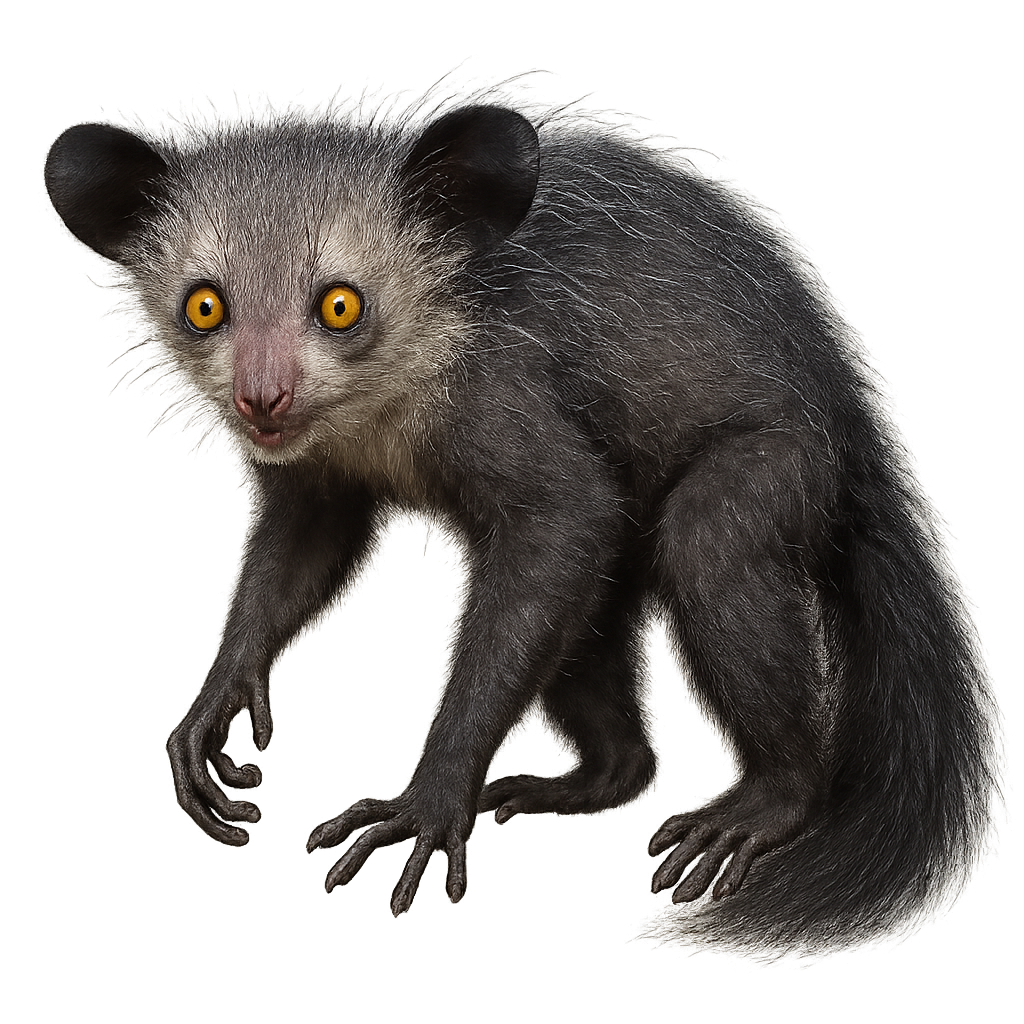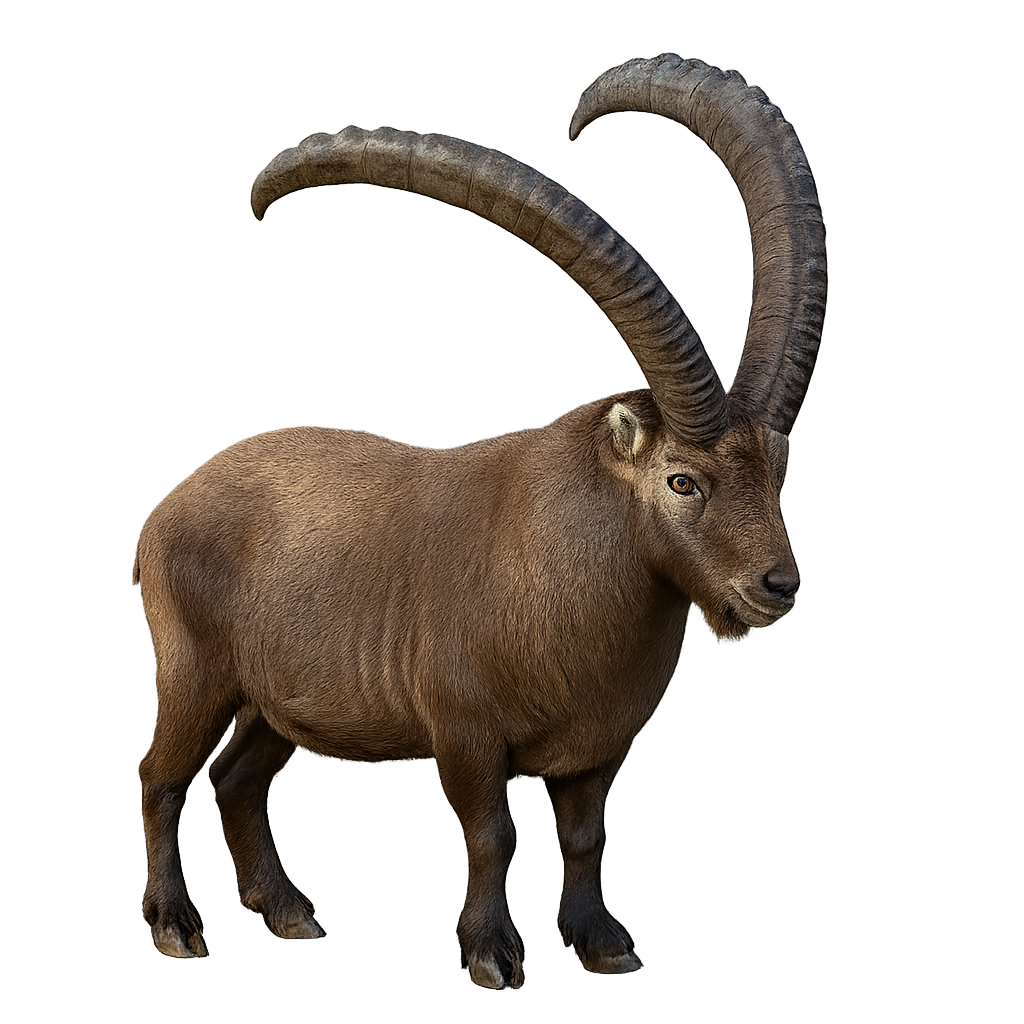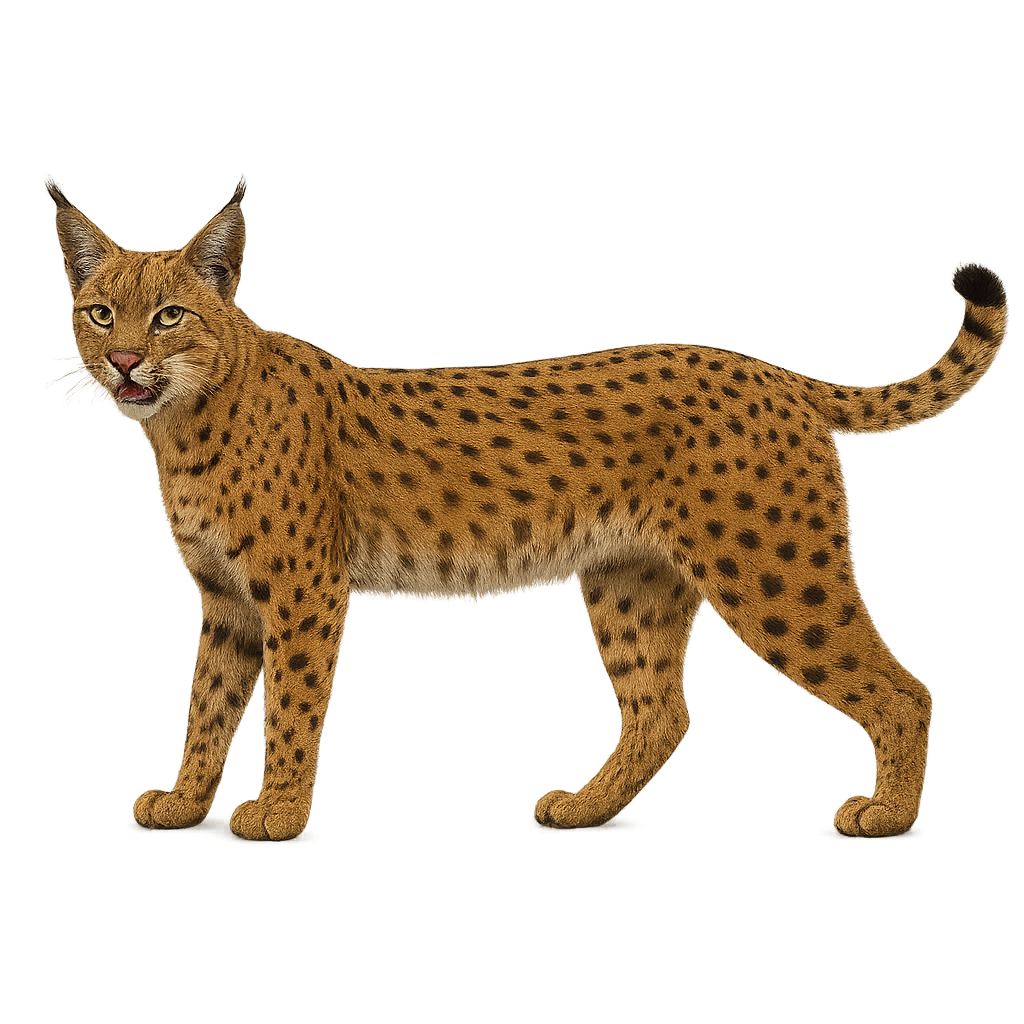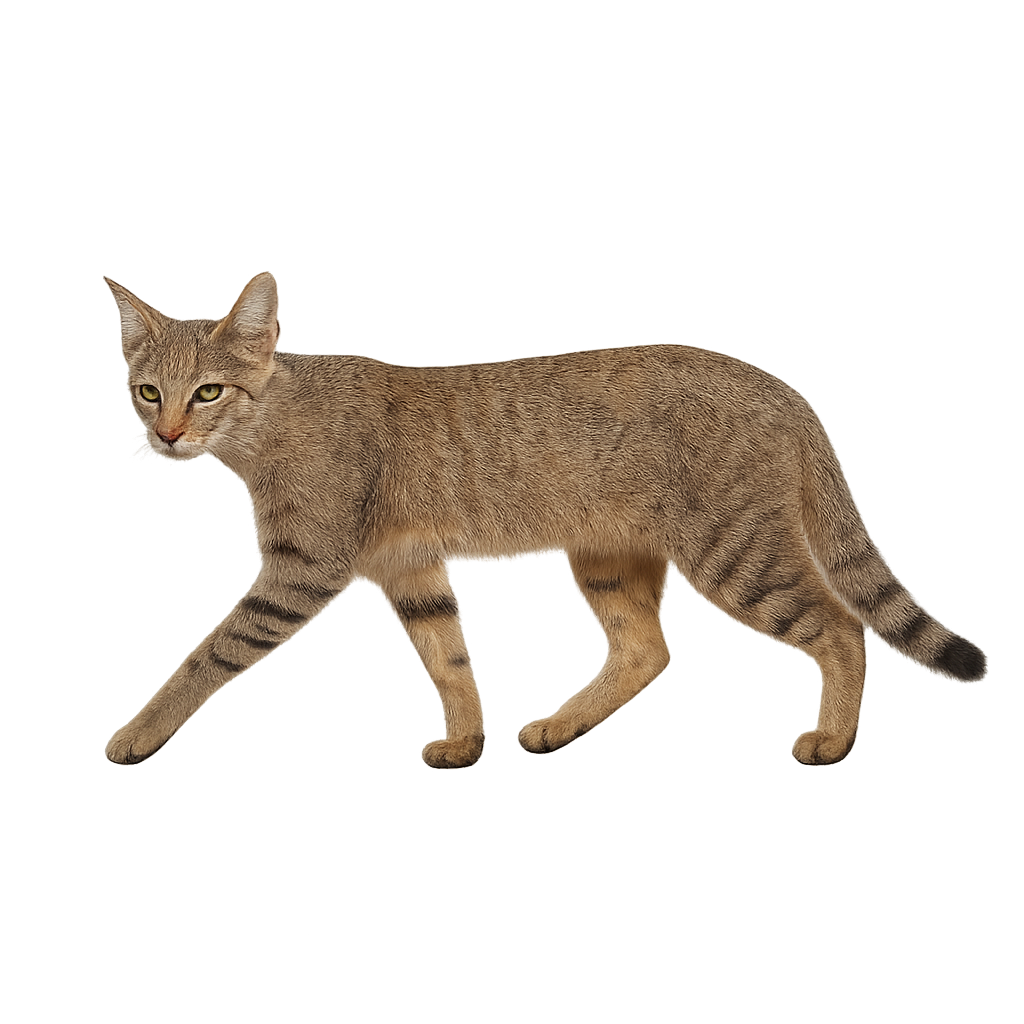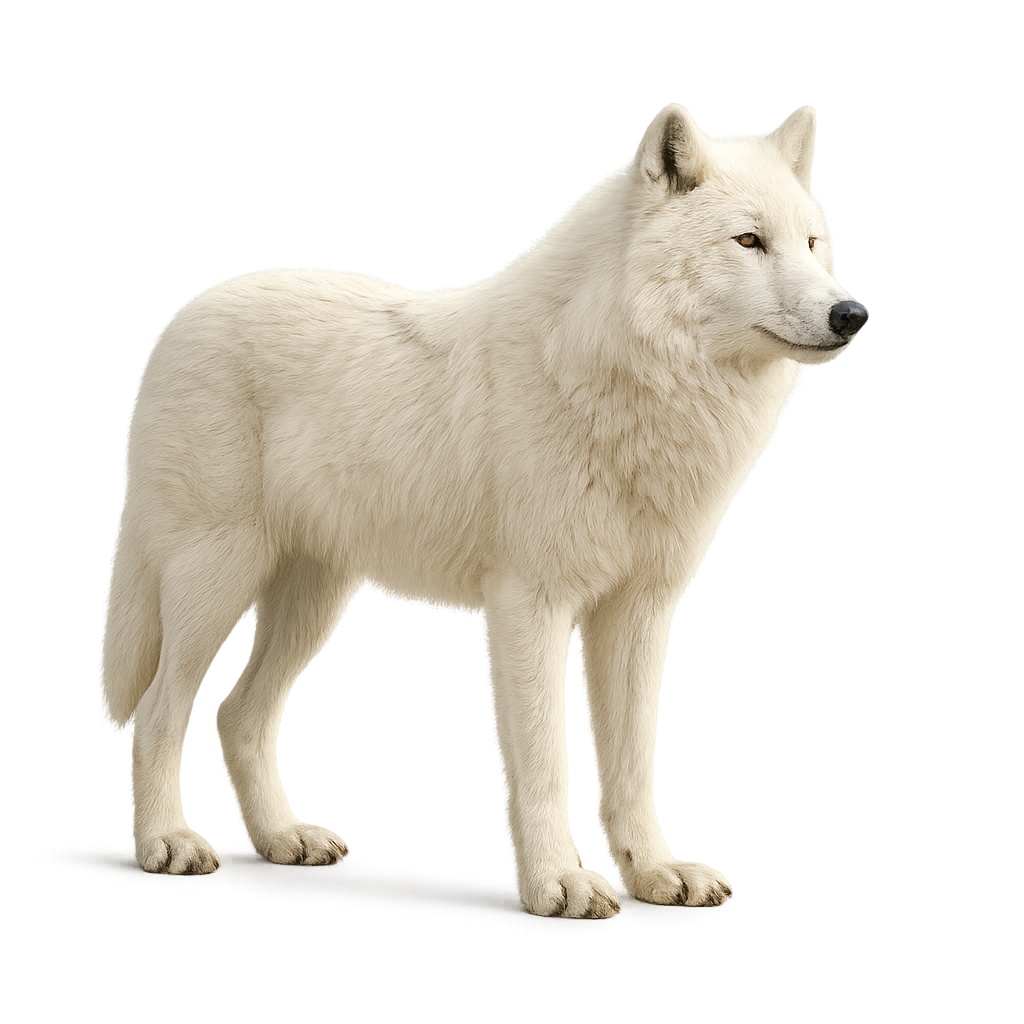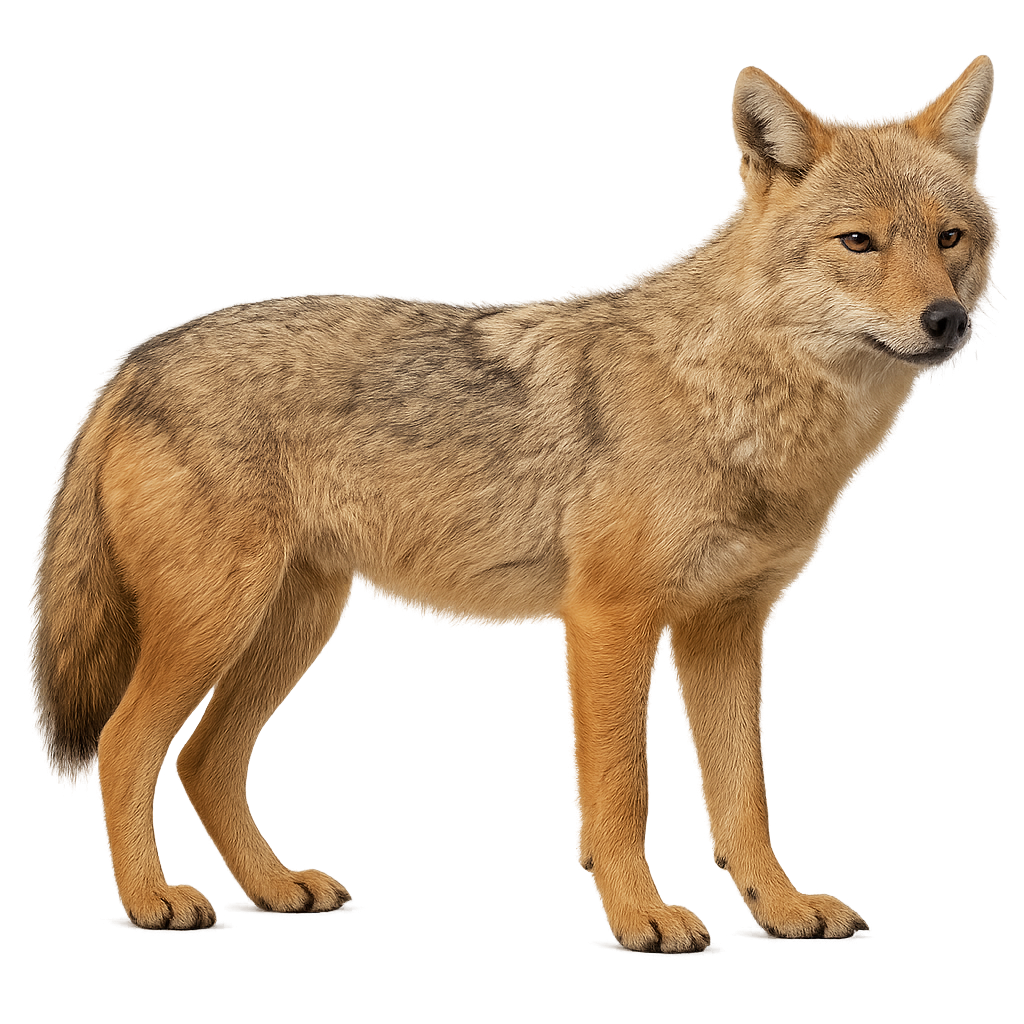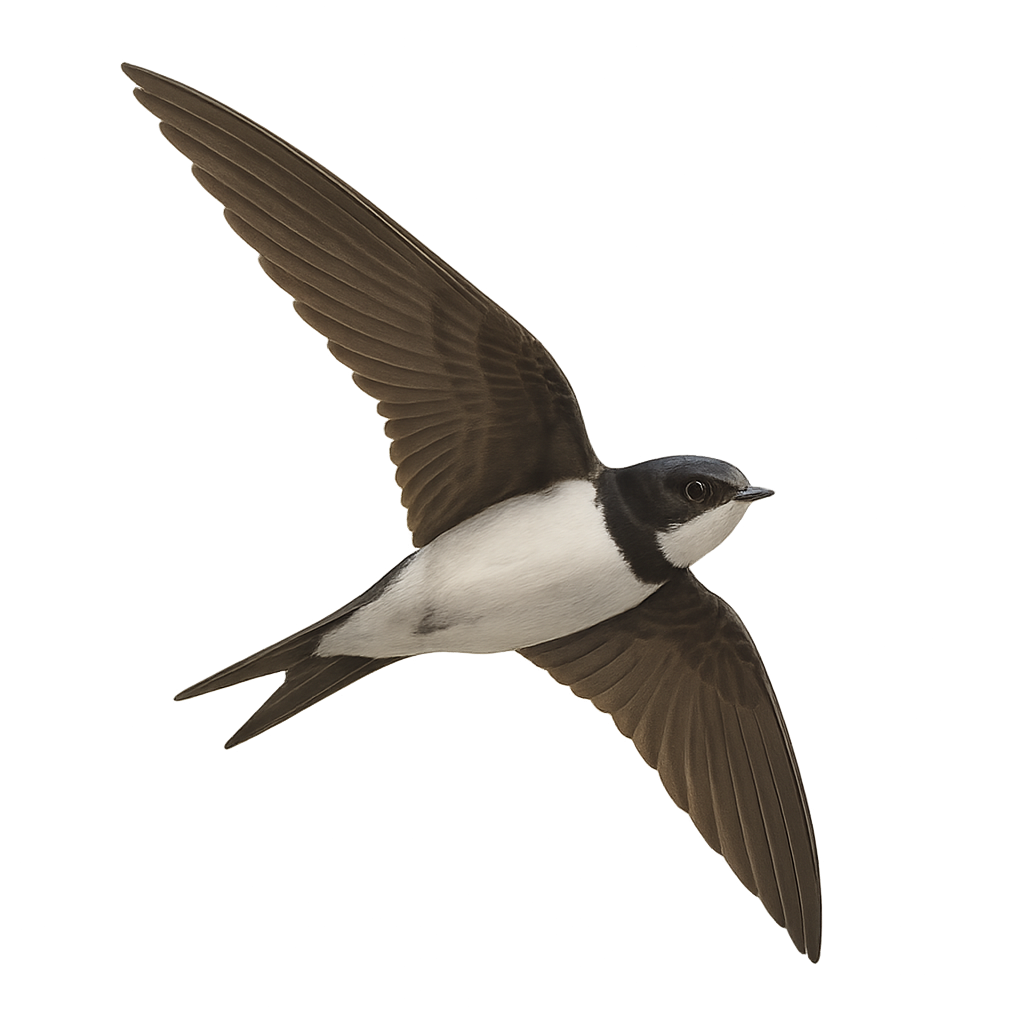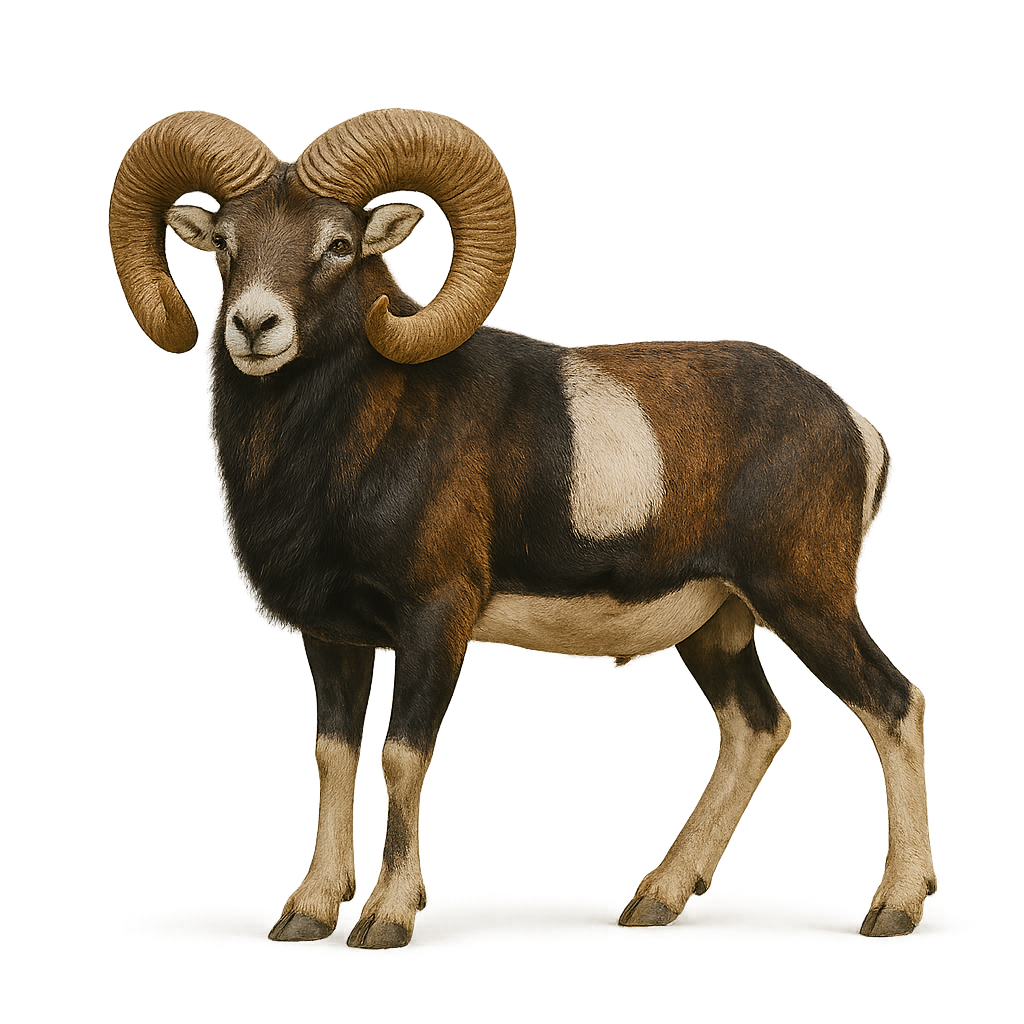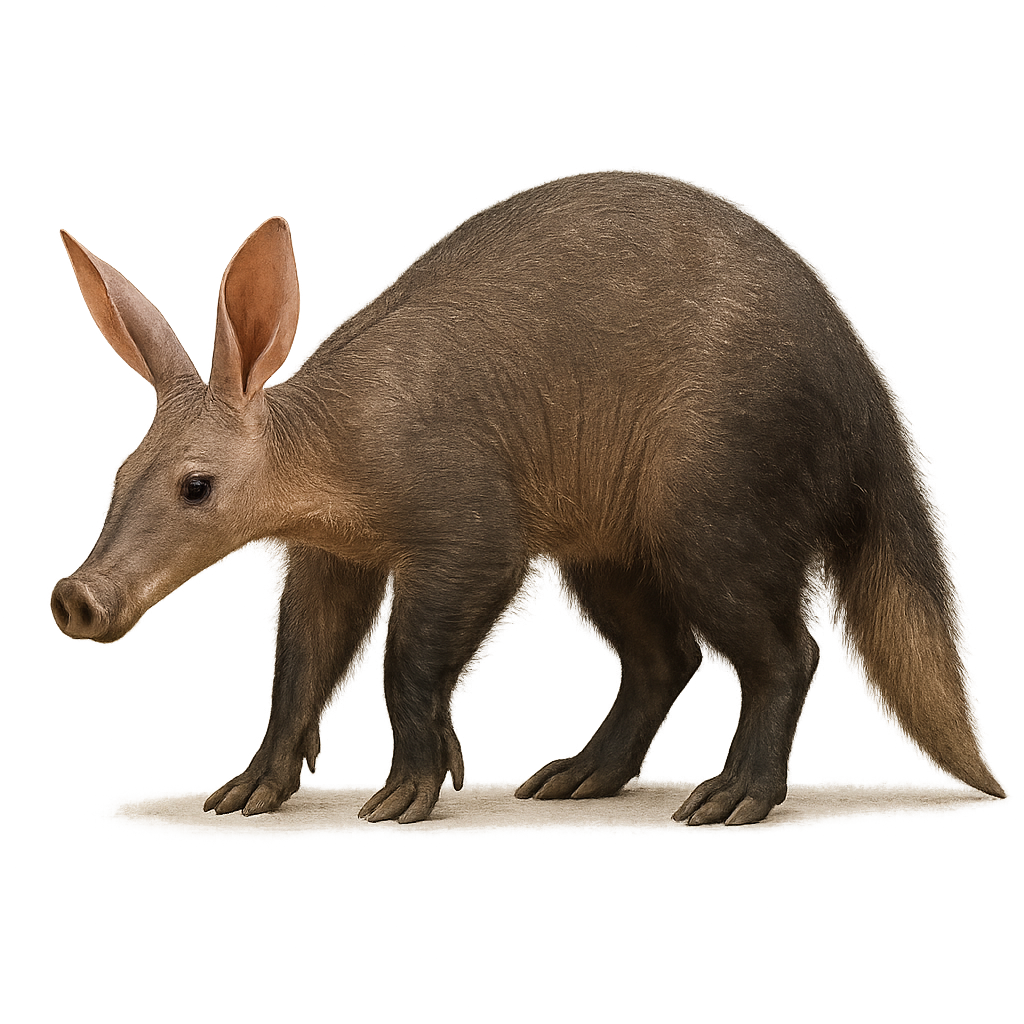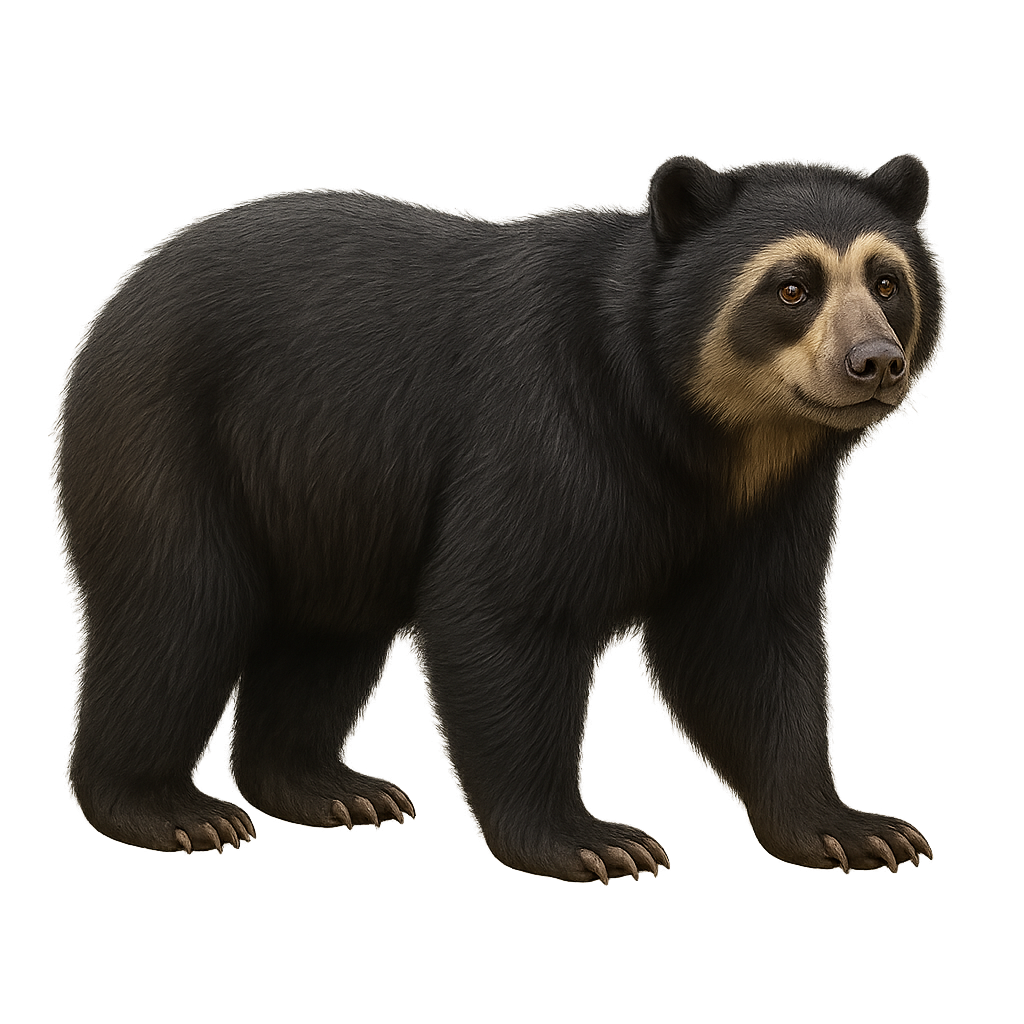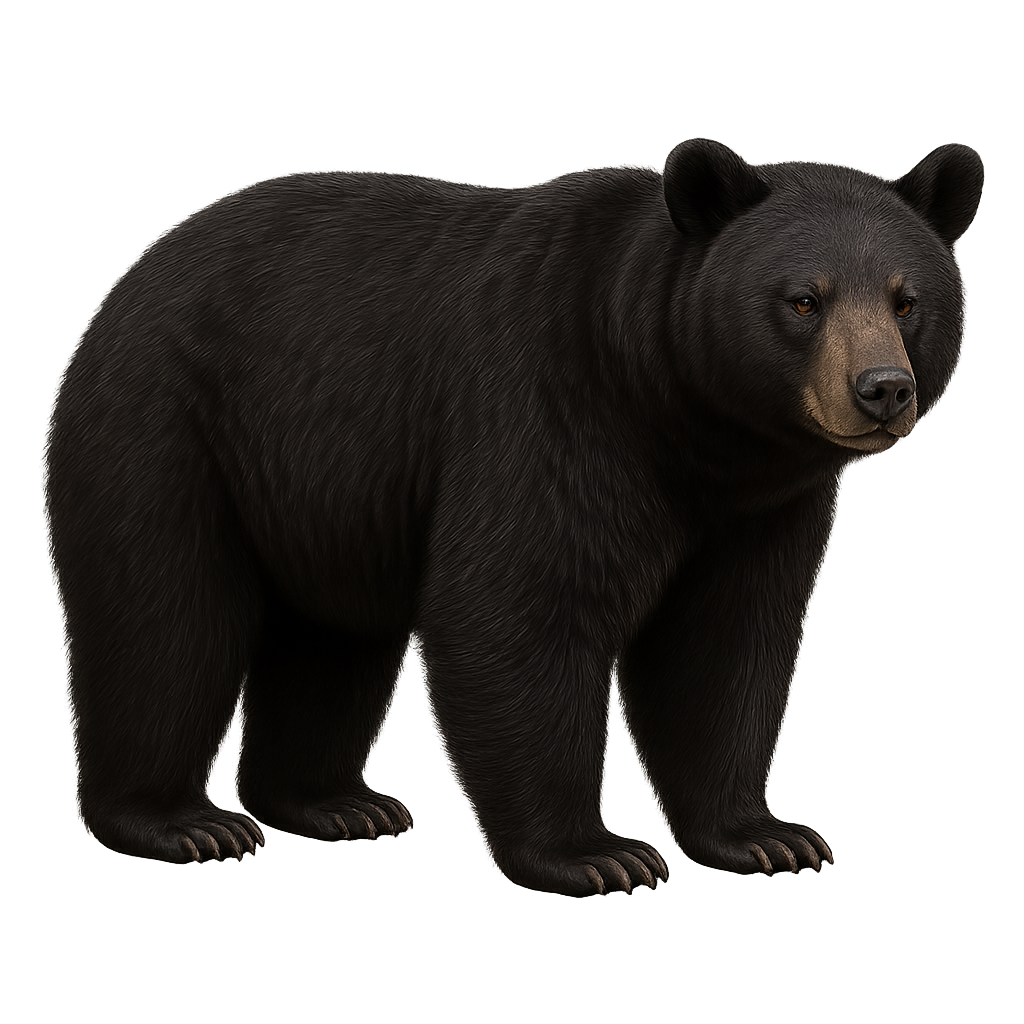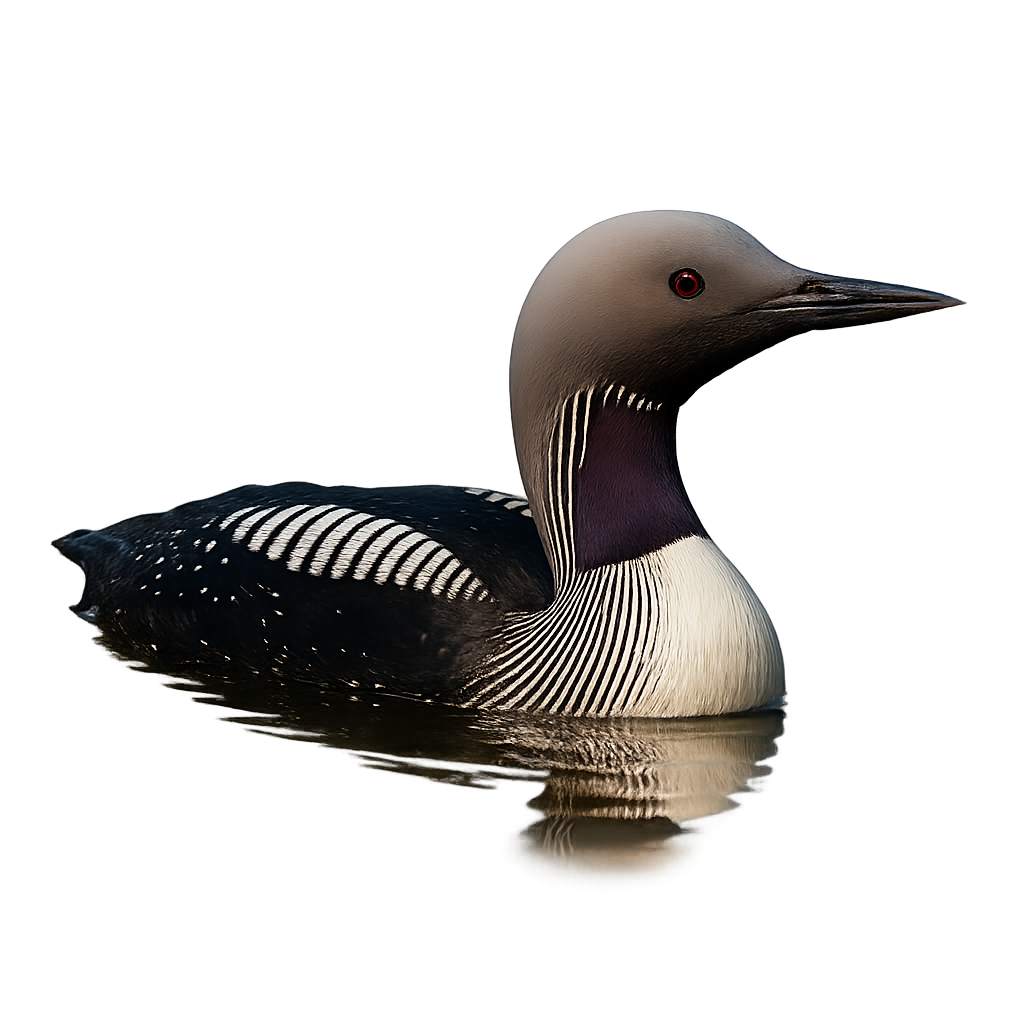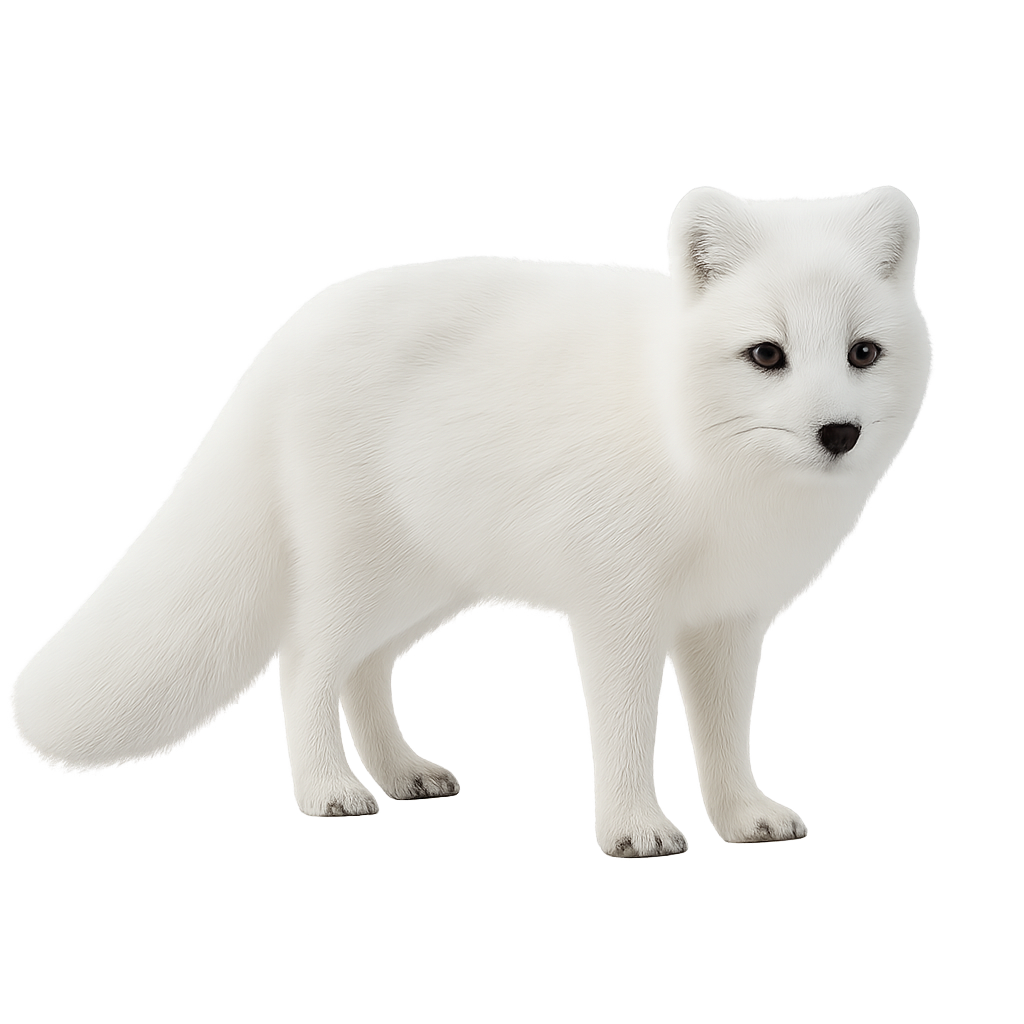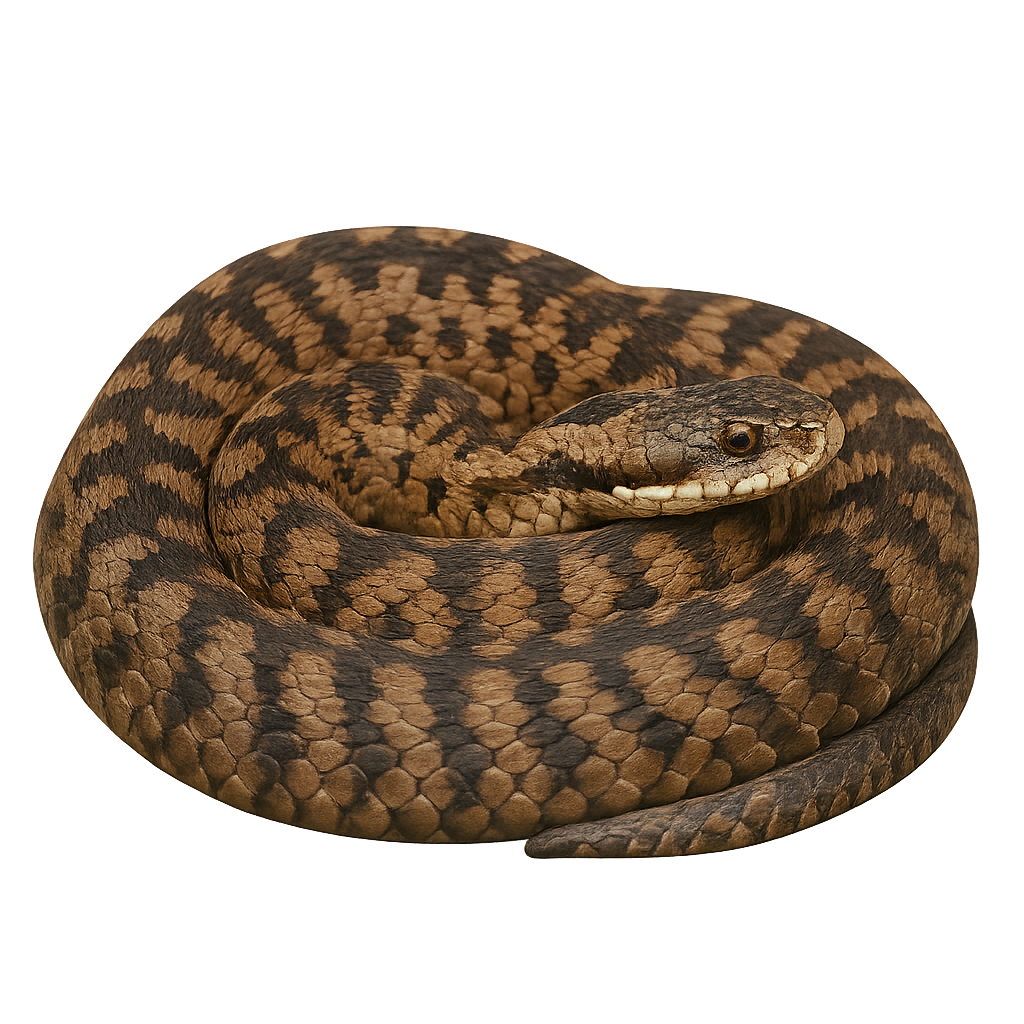The American Alligator, often simply referred to as the Mississippi Alligator, is an imposing and formidable reptile, easily recognizable by its dark skin and sharp eyes. It primarily inhabits the swamps, rivers, and lakes of the southeastern United States, where it is a top predator in the food chain. The alligator is an opportunistic hunter, feeding on fish, birds, small mammals, and even carrion. It has a remarkable ability to adapt and can survive in various environments, from freshwater swamps to salty coastal areas.
During the breeding season, males emit powerful calls that echo through the swamps to attract females, and nests are built in strategic locations to maximize egg protection.
The Argali is the largest wild sheep in the world, known for its imposing size and majestic spiral horns. It primarily inhabits the mountains of Central Asia, where it frequents the arid and semi-arid regions of steppes and high plateaus. This large ungulate is perfectly adapted to mountainous environments, moving nimbly on steep terrain at high altitudes. The Argali is a herbivore, feeding on grasses and woody plants.
The Argali is also a symbol of strength and resilience, but it is threatened by habitat loss and overhunting. Conservation efforts are underway to protect this iconic species and preserve its natural habitat.
The Axolotl is a fascinating species of amphibian native to lakes around Mexico City, Mexico. Unlike most other amphibians, the Axolotl retains its juvenile form throughout its life, a phenomenon known as neoteny. It is famous for its exceptional ability to regenerate parts of its body, including limbs, internal organs, and even its heart. It has a distinctive appearance with its pale pink skin and external gills, giving it the appearance of a small aquatic dragon. The Axolotl primarily lives in cold, deep waters of lakes, where it feeds on small invertebrates.
Aye-aye
Daubentonia madagascariensis
The Aye-aye is a nocturnal lemur endemic to Madagascar, known for its strange appearance, notably its extremely long and thin middle finger which it uses to extract insects and larvae from tree trunks. It is a shy and secretive animal, primarily living in the tropical forests of the island. Due to its unique feeding method, it is sometimes viewed as an omen of misfortune by local populations, though its ecological role in maintaining forest balance is crucial. The Aye-aye is listed as vulnerable due to deforestation and cultural beliefs surrounding it.
The American Bison is one of the largest land mammals in North America, recognizable by its massive head, thick fur, particularly on its back. Once widespread, it nearly went extinct in the 19th century due to overhunting and habitat loss. Today, thanks to conservation efforts, the population of American Bison is growing, though the species remains protected in many areas.
The American Bison lives in herds, primarily in grasslands and plains. Herbivorous, it feeds on grasses, woody plants, and some vegetation. As it moves, it creates powerful tracks in the plains. This social mammal is also known for its territorial behavior, with males fighting for dominance within the group.
The American Badger is a medium-sized carnivore, easily recognizable by the distinctive white stripes on its head and its sturdy, stocky body. It primarily inhabits prairies and semi-arid areas in North America, where it digs complex burrows for shelter and raising its young. The American Badger is mainly insectivorous, feeding on worms, insects, and occasionally small mammals and reptiles. Its powerful claws allow it to dig quickly and efficiently into the ground.
The American Badger is a solitary animal, often active at dusk and during the night. While not immediately endangered, it can be affected by habitat loss and illegal hunting in some regions.
The Alpine Ibex is a large herbivorous mammal, easily recognized by its long, curved horns and light brown or grayish coat. It primarily inhabits the rugged mountains of the Alps, southern Europe, and some mountainous regions of the Middle East. The Alpine Ibex feeds on alpine vegetation, grasses, and woody plants, and it is particularly adapted to life at high altitudes due to its great agility on rocky terrain and its thick coat.
This animal is social and lives in family groups, although adult males, called "ibex", form separate groups. After nearly disappearing in the early 20th century due to overhunting, conservation programs have helped stabilize its population. However, it remains vulnerable to habitat loss and human disturbances.
The Alpine Chamois is an elegant and agile ungulate, well adapted to the mountainous environments of the Alps, Pyrenees, and other mountain regions of Europe. It is distinguished by its reddish-brown coat in the summer, which becomes more gray and thicker in the winter, helping it endure the cold temperatures. The Alpine Chamois has small, curved horns, present in both males and females, but larger in adult males.
This ruminant primarily inhabits rocky slopes, mountain forests, and alpine meadows, where it feeds mainly on herbaceous vegetation, mosses, and lichens. The Alpine Chamois is an excellent climber, able to move with agility over steep and rocky terrain. It is usually solitary or lives in small family groups, but may also gather in larger herds during the winter. Although its population is stable in many areas, the Alpine Chamois remains vulnerable to hunting and human disturbances in its mountainous habitats.
The African Golden Cat is a rare and mysterious small feline, characterized by its silky golden coat and pointed ears adorned with tufts of black hair. This medium-sized cat primarily inhabits the forests and savannas of West Africa, where it preys mainly on birds, small mammals, and reptiles. Its golden coat, which gives it its name, is perfect for camouflaging in tall grasses and foliage.
The African Golden Cat is a discreet and solitary hunter, primarily active at dawn and dusk. Although it is rare and difficult to observe due to its nocturnal habits, it plays an important role in regulating prey populations. The species is threatened by habitat loss and poaching, although conservation efforts are in place to protect this elusive feline.
The African Wildcat is a small, discreet, and nocturnal feline, primarily found in desert regions, savannas, and open forests of North and Sub-Saharan Africa. It is often compared to the domestic cat but has a more uniform coat, typically sandy or gray-brown, with light markings on the head and paws. Its eyes are large, adapted for nocturnal vision, and its ears are pointed, enhancing its wild appearance.
This cat is a solitary hunter, feeding mainly on small mammals, birds, and insects. Although shyer than its domestic cousin, it plays an essential role in regulating prey populations in its habitat. It is also known as the ancestor of the domestic cat, which was domesticated from this species around 10,000 years ago. While the African Wildcat is still relatively widespread, it is threatened by habitat loss and human conflict.
The African Wild Dog is an exceptional social predator, easily recognized by its unique spotted coat, which ranges in color from yellow-orange to black, with irregular markings. It has large, rounded ears and an expressive face. This carnivore primarily lives in organized packs, which allow it to effectively hunt large mammals such as gazelles and impalas. Their hunting strategy is based on cooperation, speed, and endurance, with long and energetic chases.
The African Wild Dog is also known for its social behavior, with pack members maintaining strong bonds through vocalizations, play, and grooming rituals. Unfortunately, this species is endangered due to habitat loss, illegal hunting, and conflicts with humans. It is a protected species, and efforts are underway to preserve remaining populations in wildlife reserves.
The Andean condor is one of the largest flying birds in the world, known for its impressive wingspan reaching up to 3.3 meters. It primarily inhabits the Andean mountains, where it feeds on animal carcasses. Its majestic flight and habit of soaring at high altitudes make it a fascinating subject for photographers. Although protected, the Andean condor is threatened by habitat loss and poisoning from consuming contaminated carcasses.
The Aesculapian Snake is a non-venomous, long and slender snake that can reach up to 2 meters in length. Its coloration ranges from olive green to brown, with smooth scales and a metallic sheen. It inhabits temperate forests, hedgerows, fallow lands, and rocky areas, often near human settlements. It is diurnal and arboreal, primarily feeding on small mammals, birds, lizards, and eggs. Reproduction occurs in spring, with 2 to 18 eggs laid and incubated for 6 to 10 weeks. Protected species in Europe, it is listed as Least Concern by the IUCN.

The American Crocodile, also known by the scientific name Crocodylus acutus, is a large reptile distinguished by its impressive size and broad distribution. It can reach lengths of 6 to 7 meters, although some individuals can exceed this size. Its body is covered with green to gray scales, often speckled with darker patches, which help it blend perfectly into the brackish waters and marshlands of its habitats. The American crocodile primarily lives in coastal and estuarine areas, where it feeds on fish, birds, and small mammals. It is an opportunistic hunter and can occasionally capture large prey when they venture too close to the water. This reptile is semi-aquatic and spends a significant amount of time in the water, but it is also capable of moving on land. Regarding migration, the American crocodile is relatively sedentary, although it can travel long distances along the coast depending on environmental conditions. It is listed as vulnerable due to habitat loss and intensive hunting for its skin. Potential Threats: habitat loss due to coastal development and water pollution, illegal hunting for its skin and meat.

The Asian Elephant is a large land mammal, known for its imposing size and large rounded ears. It typically stands between 2 and 3.5 meters at the withers and weighs between 2,000 and 5,000 kg. Its coat is generally grayish, although some individuals may have a more brownish tint. The Asian Elephant differs from the African Elephant in its smaller size, narrower ears, and its trunk, which has a single "finger" at the tip. This elephant primarily inhabits tropical forests, savannas, and wetland areas in South and Southeast Asia, including India, Thailand, Sri Lanka, and Cambodia. It is herbivorous, feeding on leaves, bark, fruits, and grasses. The Asian Elephant has often been associated with human communities due to its historical role in labor, transport, and religious ceremonies. However, the species is threatened by habitat loss due to agriculture, poaching for its valuable tusks, and conflicts with human populations. It is listed as endangered by the International Union for Conservation of Nature (IUCN).
The Forest Elephant is a large land mammal, characterized by its smaller size compared to the Asian Elephant and the African Savannah Elephant, standing around 2 to 3 meters at the withers and weighing between 2,000 and 5,000 kg. Its coat is gray, but its skin is often rougher than other elephants, and its ears are smaller, adapted to its forest habitat. The Forest Elephant primarily inhabits the dense forests of Central and West Africa, where it feeds on a wide variety of vegetation, including leaves, bark, fruits, and roots. Unlike the Savannah Elephant, it is more discreet and less social, though it may form small family groups. This elephant plays a key role in its ecosystem, contributing to seed dispersal and forest regeneration. However, the species is threatened by deforestation, poaching for its valuable tusks, and conflicts with human communities. It is currently listed as vulnerable by the International Union for Conservation of Nature (IUCN).

The African Savannah Elephant is the largest land mammal, and the largest of all terrestrial animals. It can stand up to 4 meters tall at the withers and weigh between 4,000 and 7,500 kg. Its coat is gray, with rough skin often covered in dust or mud to protect it from the sun and parasites. The African Savannah Elephant is easily recognizable by its large ears, shaped like the map of Africa, which help regulate its body temperature. This elephant is primarily herbivorous, feeding on leaves, bark, fruits, and plants. It inhabits savannas, grasslands, and open forests across sub-Saharan Africa. The African Savannah Elephant is a social animal, living in family groups led by an older female. It plays a crucial role in its ecosystem by creating openings in vegetation and dispersing seeds. However, the species is threatened by habitat loss, poaching for its valuable tusks, and conflicts with human communities. The African Savannah Elephant is currently listed as vulnerable by the International Union for Conservation of Nature (IUCN).
The Azureus Poison Dart Frog is a brightly colored and striking species, known for its vivid blue color that varies in intensity. Native to the humid tropical forests of Guyana, Suriname, and Brazil, it is famous for its camouflage abilities and skin glands that secrete potent toxins, used for defense against predators. This frog is primarily terrestrial and lives in areas near streams and swamps, where it feeds on insects and other small prey. Due to its coloration, it serves as a warning signal to predators. It is primarily diurnal.
The Arctic Wolf is a subspecies of the gray wolf, primarily found in the cold and snowy regions of the Arctic, particularly in northern Canada, Alaska, and Greenland. It measures about 1.5 to 2 meters in length, including its tail, and weighs between 30 and 50 kg, with males generally being larger than females. Its coat is thick and pure white, allowing it to blend perfectly into the snowy landscapes. This wolf has evolved to adapt to the extreme conditions of its environment, with wide paws that allow it to walk in deep snow, and dense fur that protects it from the cold. The Arctic Wolf lives in family groups, typically consisting of 5 to 10 individuals, who hunt together for prey such as caribou, birds, and other mammals. Although this subspecies is adapted to its environment, it is vulnerable to climate change, which affects the distribution of its prey and natural habitat. The Arctic Wolf is also threatened by hunting and habitat loss due to human activity.
The Golden Wolf is a medium-sized canid native to the Middle East and certain regions of East Africa. It measures about 1.2 to 1.5 meters in length, including its tail, and weighs between 11 and 20 kg. Its coat is generally golden yellow or light brown, with black markings on its back and legs, and lighter shades on its belly. It has long, pointed ears and a narrow, elongated head. The Golden Wolf is primarily carnivorous, feeding on small mammals, birds, reptiles, and sometimes fruits. It lives in family groups or small packs and often hunts cooperatively with other members of the group. The Golden Wolf prefers open areas such as savannas, steppes, and mountains and is particularly adapted to semi-arid environments. Although the species is not immediately endangered, it is threatened by habitat loss, human conflict, and competition with larger carnivores such as jackals and lions.
The Atlantic Puffin is a seabird characteristic of the coasts of the North Atlantic, particularly around the British Isles, Greenland, Iceland, and parts of Canada. It measures about 30 cm in length, with a wingspan of 50 to 60 cm, and weighs between 300 and 500 g. It is distinguished by its black and white plumage and its colorful beak, which is bright orange with red and blue bands during the breeding season. Outside of the breeding period, the Atlantic Puffin loses its bright colors and its beak becomes paler. This bird is an excellent diver, primarily feeding on fish and crustaceans, which it catches by diving underwater with great agility. The Atlantic Puffin is also known for its social behavior, gathering in large colonies during breeding on cliffs or remote islands. Although it is widely distributed, the Atlantic Puffin is sensitive to human disturbances, such as disruptions caused by tourism, and ocean pollution, particularly oil spills.
The Alpine Marmot is a large rodent primarily found in the mountainous regions of Europe, especially in the Alps, the Pyrenees, and the mountains of Italy. It measures about 40 to 60 cm in length, with a tail of 10 to 15 cm, and weighs between 3 and 7 kg, with females generally being a little smaller than males. Its coat is thick and typically brown-gray, with a lighter belly, allowing it to blend into its rocky and grassy environment. The Alpine Marmot lives in burrows dug into the ground, where it takes refuge to sleep, escape predators, and hibernate during the winter, a period when it enters a state of torpor for several months. During the summer season, it primarily feeds on grasses, roots, flowers, and berries. The Alpine Marmot is a social animal, typically living in family groups or colonies. While its population remains relatively stable, it is threatened by climate change and human development of its natural habitat.
The Alpine Swift is a large swift measuring between 20 and 23 cm in length, with a wingspan of 51 to 58 cm. It has a white belly and throat, separated by a brown pectoral band, and a brown-gray back. It is often confused with the Common Swift, but it is larger and more robust. A migratory species, it winters in tropical Africa and returns to Europe between March and April. It primarily nests in inaccessible rock cavities but can also occupy urban sites. It feeds exclusively on insects captured in flight, often at high altitudes. It is monogamous, and pair bonds can last over ten years. In Switzerland, it is present from late March to late October. A protected species, it is considered potentially threatened due to the loss of its natural nesting sites.
The Mouflon is a small wild sheep found primarily in the mountains of Europe, the Middle East, and Central Asia. It measures between 70 and 80 cm in height at the withers and weighs between 40 and 80 kg, with males generally being larger and more imposing than females. What distinguishes the Mouflon is the presence of large, curved horns in males, while females have smaller and less pronounced horns. Their coat is generally reddish-brown in the summer, with a white belly and a darker mane along the back, which becomes thicker and fuller in the winter. The Mouflon primarily inhabits mountainous areas, forests, and meadows, where it feeds on grasses, leaves, shrubs, and roots. It is an excellent climber and moves easily across rocky and steep terrain. While its population remains stable, the Mouflon may be threatened by habitat loss, hunting, and competition with domesticated livestock.
Native to the savannas and forests of sub-Saharan Africa, the Aardvark is a nocturnal mammal that primarily feeds on termites and ants. It has a long sticky tongue which it uses to extract insects from their burrows. This mammal is easily recognizable by its large ears, elongated snout, and sturdy limbs. Although relatively discreet, the Aardvark is threatened by habitat loss and poaching.
The Andean Bear, also known as the spectacled bear, is a large mammal found primarily in the tropical forests and mountains of South America, particularly in Colombia, Venezuela, Ecuador, and Peru. It measures about 1.5 to 2 meters in length and weighs between 100 and 200 kg. Its coat is generally black, with white or cream markings around its eyes in the shape of spectacles, hence its name. The Andean Bear is an omnivore, primarily feeding on fruits, plants, honey, and insects, but it may also eat small mammals or birds. It is an excellent climber, using its powerful claws to move through trees in search of food. Although its population remains stable in some areas, the Andean Bear is threatened by habitat loss, deforestation, and poaching.
The American Black Bear is a large carnivore primarily found in North America, in forests, mountains, and wooded areas. It measures between 1.5 and 2.5 meters in length and weighs between 45 and 250 kg, depending on the subspecies and habitat conditions. Its coat ranges from black to light brown, and it has a short muzzle and a large head. The Black Bear is an omnivore, primarily feeding on fruits, berries, nuts, roots, fish, small mammals, and sometimes carrion. It is also an excellent climber and a skilled swimmer, capable of moving through trees and crossing rivers in search of food. While its population remains relatively stable, the Black Bear is threatened by habitat loss, vehicle collisions, and hunting.
The Asiatic Black Bear, also known as the Tibetan Bear, is a medium-sized mammal found primarily in the mountains of Central Asia, the Indian subcontinent, China, and Russia. It measures between 1.2 and 1.8 meters in length and weighs between 60 and 200 kg. Its coat is typically black, with a distinctive white "V"-shaped mark on its chest. The Asiatic Black Bear is an omnivore, feeding on fruits, berries, roots, small animals, insects, and occasionally carrion. It is an excellent climber and spends much of its time in trees, where it feeds and rests. While the Asiatic Black Bear remains relatively common in some regions, it faces numerous threats such as habitat loss, illegal hunting, and poaching for its body parts.
The Arctic Fox is a small carnivore found in the Arctic regions, primarily in Alaska, Canada, Scandinavia, and Russia. It measures about 45 to 50 cm in length, with a tail of 30 to 35 cm, and weighs between 3 and 9 kg, depending on the seasons. Its fur is typically white in winter, allowing it to camouflage in the snow, while it takes on a more brown or grayish hue in summer to blend in with the rocky and grassy landscapes. The Arctic Fox is an opportunistic omnivore, feeding on small mammals, birds, eggs, fruits, and berries. Although well adapted to the extreme living conditions of the Arctic, it is threatened by climate change, which is altering its natural habitat and the availability of its prey.
The African straw-coloured fruit bat is a fruit-eating bat species native to sub-Saharan Africa. This bat is easily recognizable by its golden or straw-colored fur, which helps it blend into the foliage during the day. The African straw-coloured fruit bats primarily feed on fruits, nectar, and pollen, playing a crucial role in pollinating plants. They form large colonies and are often seen in flight at dusk as they head out to search for food. These bats can also travel long distances, making them adaptable to a wide range of habitats.
The Arctic Tern is a migratory bird species primarily found in coastal regions of the Arctic during the summer, and in tropical and subtropical areas during the winter. It measures about 35 to 40 cm in length, with a wingspan of 80 to 100 cm, and weighs between 90 and 130 g. Its plumage is mostly white with gray tones on the back and wings, and its head is black with a distinctive black band around the eyes. The Arctic Tern is famous for its impressive migrations, traveling thousands of kilometers between its breeding sites in the Arctic and its wintering grounds in Africa, Southeast Asia, and Australia. It primarily feeds on fish and marine invertebrates, which it catches by diving into the water. While its population remains stable, the Arctic Tern is threatened by habitat loss, human disturbances, and climate change.
The Asp Viper is a venomous snake species found primarily in rocky areas, meadows, and forests of Southern Europe, notably in France, Spain, Italy, and Switzerland. It typically measures between 60 and 80 cm in length, although some individuals can reach up to 1 meter. Its color ranges from gray to brown, with a zigzag pattern on its back and a distinct triangular head. The Asp Viper primarily feeds on small mammals, lizards, and birds. While venomous, its poison is generally harmless to humans, though bites do require medical attention. It is a protected species in many regions but is threatened by habitat loss and human persecution.


